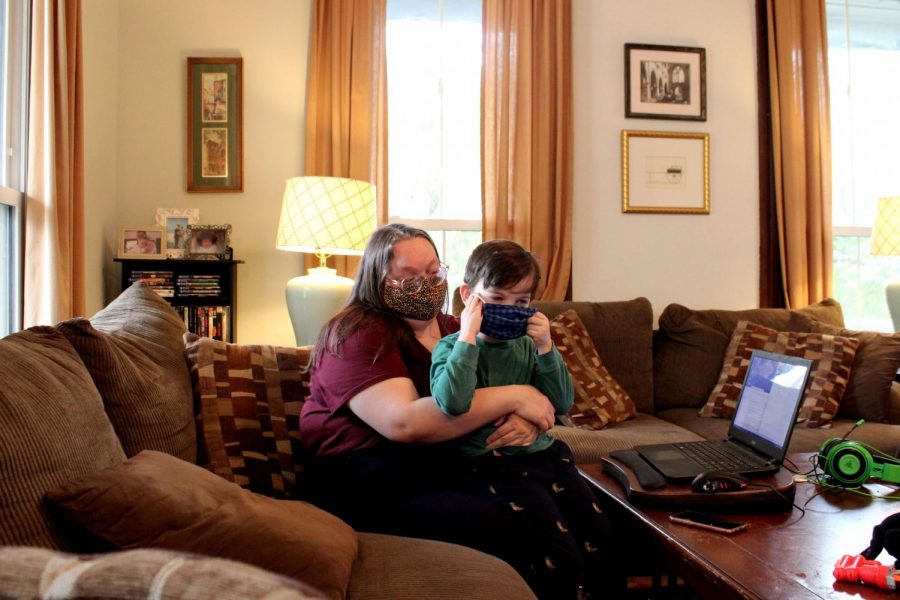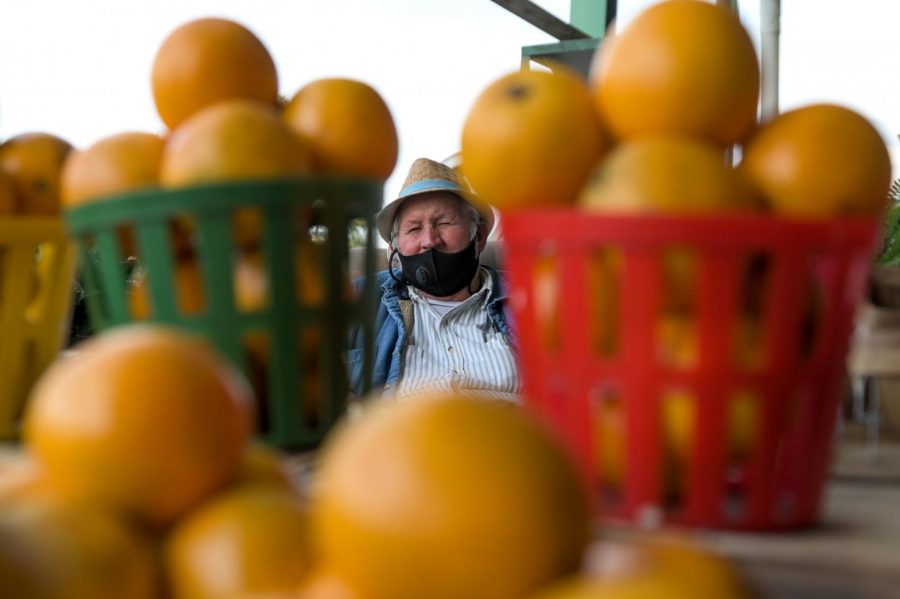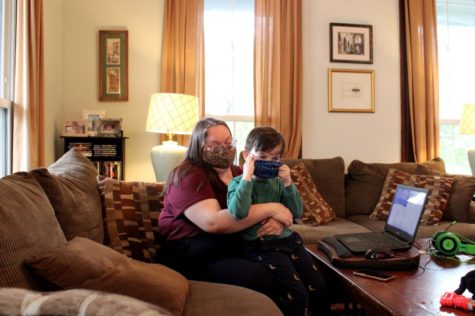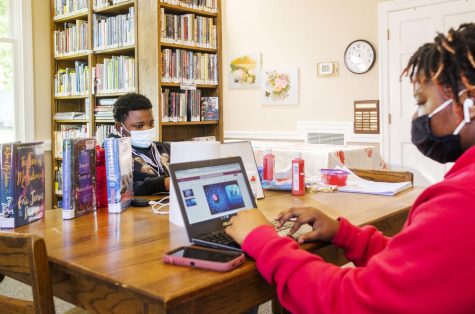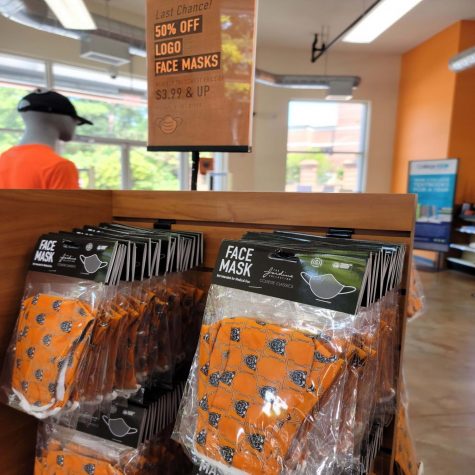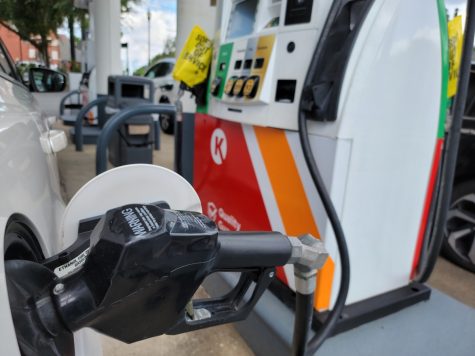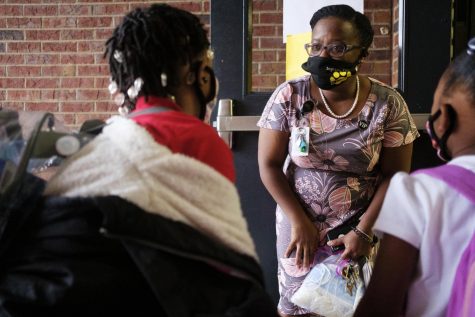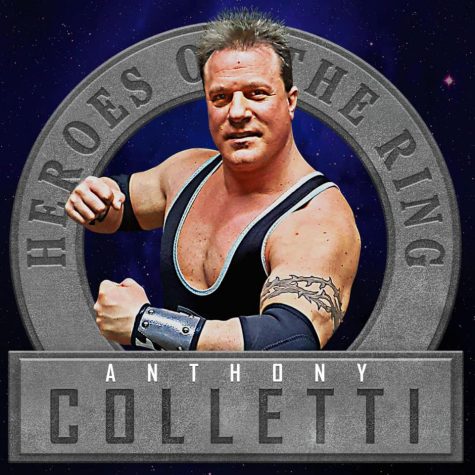Cost of Covid: A Deeper Community Look
Growing up through the screen
By Mary Helene Hall and Hunter Gause
The Hinson house has seen tons of pandemic-related changes. With a mom working from home, a dad teaching elementary school virtually from his classroom, and two sons learning virtually, they will be the first to tell you they are tired of coronavirus.
Lennox, a kindergartner, is spending his first year in the classroom online, meaning he doesn’t entirely know what he’s missing out on, but he still knows he’s missing out on something. His mom, Lane, said that he has asked her why he doesn’t have many friends.
When asked if he is tired of coronavirus, he emphatically yells, “Yes!”
The Hinsons boys have a lot of energy but are applying themselves in school in the virtual environment. Not all kids have been able to focus with the shift.
“Even parents have told us, ‘you know they’ve gotten lazy. What’s going on with them?’” Bernd Elementary School’s school counselor Nakeisha Leitzsey said.
Children at Bernd have changed behavioral-wise since the pandemic has started. The Centers for Disease Control and Prevention states that 7.4% of kids aged 3 to 17 have been diagnosed with a behavioral problem and 7.1% of kids aged 3 to 17 have been diagnosed with anxiety.
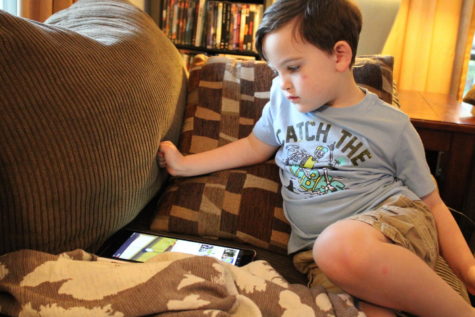
Since the beginning of the pandemic, children have not been able to truly be children. They have been subjected to doing school in front of a computer screen.
Older generations often pick on Generation Z and Millenials for being on the internet all day, but for Lennox and Jackson, their life is online, and they don’t have much of a choice in the matter.
The American Academy of Pediatrics recommends allowing children over 2 years of age to have just an hour or less of “high-quality programming” depending on the family’s lifestyle and habits. But is that even possible in our pandemic-impacted world?
“School is on the tablets, and their brains are on the tablets, and the games are on the tablet,” their mom, Lane, said. “It’s just like you’re staring at it all the time.”

When virtual school is over for the day, they relax with more screen time. Lane has felt some anxiety about the boys’ time online — especially Lennox’s — considering she cannot monitor everything that they watch on platforms like YouTube. But another unexpected outcome has arisen with the younger boy.
“He’s started getting lazy eye problems,” she said. “So we’re gonna go to a specialist about it. I hate it. But you know, what else can you do?”
The CDC reports that between ages 9 and 11 is when children start to form those strong bonds and friendships and is an important period to make friends. However, since children are at home due to the global pandemic, it is harder for children to make those connections.
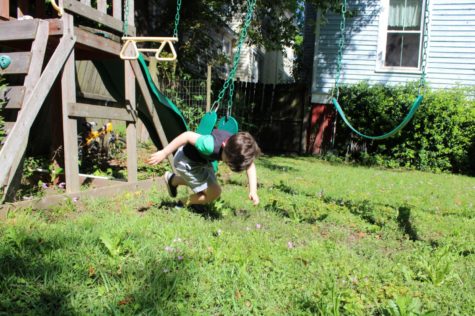
“When you break those social links, and then you don’t have those, you know, you become more withdrawn and that’s directly linked to depression,” children’s and family therapist Stephanie Heath said. She believes that all of this is a direct link to anxiety and depression. “I’m seeing a lot of anxiety and depression, just because of the change in lifestyle that happened so quickly.”
After being online for months, Jackson’s school is currently hybrid, meaning some students have chosen to return to in-person instruction, but Jackson and Lennox remain online. Likely the most impacted by COVID-19 is Jackson’s band class. He says band classes — as well as other fine arts classes — are the reason many students have decided to go back in person.
When asked how a student can participate in band class during the pandemic, he shakes his head. “You don’t.”
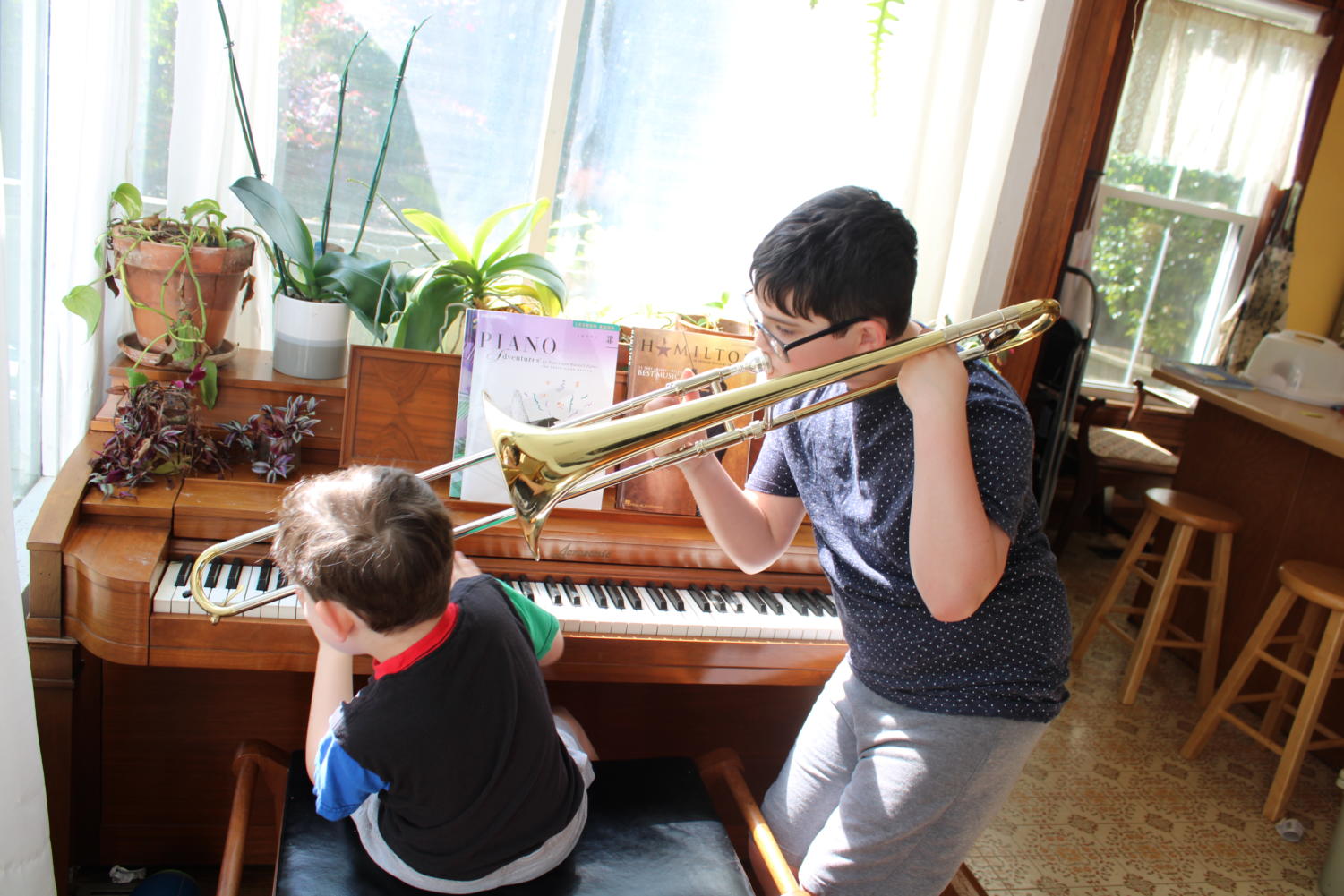
The Hinson boys haven’t really seen friends in person since the onset of the pandemic, and it emphasizes the reality that school is where kids get most, if not all of their friends.
There is still a way for children to make these valuable connections and get the social interaction they need: extracurricular activities.
The University of British Columbia suggests that extracurricular activities that nurture a sense of belonging with peers appear to bolster a preteen’s mental health. Doing extracurriculars such as playing outdoor sports like football, soccer, or cheer will give a child that social interaction that they are missing out on in school and will help out with their anxiety and depression.
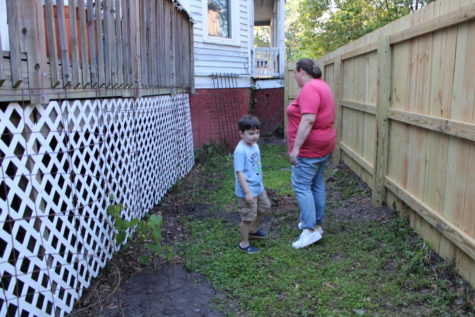
Lennox’s parents signed him up for soccer in an effort to get him active and hopefully make new friends. However, it wasn’t really Lennox’s thing.
“If they never do sports, that is fine,” Lane said. She cares more about getting them involved in what they care about.
All things considered, the Hinsons are handling the pandemic with practiced finesse. They have a routine, which is key to surviving during a tumultuous time where nothing is certain. The boys participate in virtual learning, their dad, Brandon, goes to work and when Lane isn’t able to work from home, Jackson and Lennox go to their grandparents’ house.
However next year turns out, Lane knows one thing for sure.
“(The boys) are going back to school in the fall,” she said. “Mommy’s got to go back to work.”
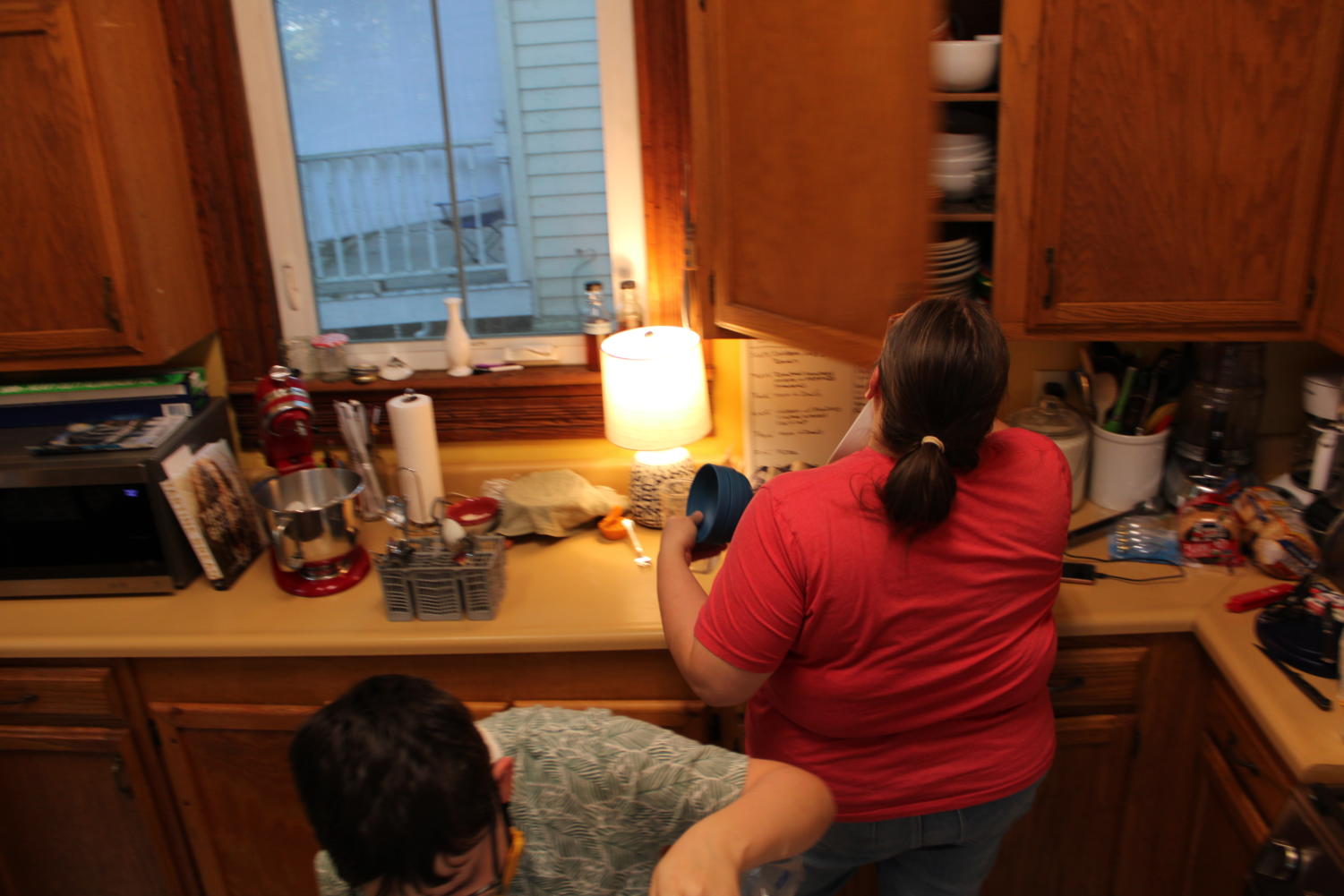
Challenges for college-bound musicians and student-athletes
By Lauren Rich and Emma Quintal
In March 2020, schools around the country told students that there would be a two-week break. Students were confused. Events like school concerts and sporting games were canceled. Few people assumed it would last more than a year.

In the months that followed, as people quarantined and wore masks, the world also erupted in protests against police brutality after the deaths of Ahmaud Arbery, Breonna Taylor, and George Floyd. The protests spread to over 2,000 cities and towns in all 50 states, as well as over 60 other countries.
High school senior, Chris Timothy was one of those protestors. He never had much interest in social media until the death of George Floyd, when he decided it was time for him to use social media as a platform under the pseudonym Prxphecy. This became his way to spread the message about the Black Lives Matter movement as well as a way to have conversations about minority groups that are historically underserved.
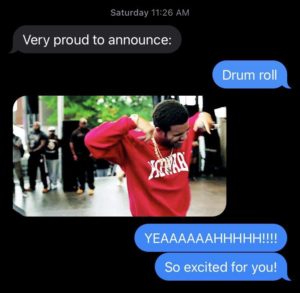 Timothy has been a musician since he was in the sixth grade when a friend asked him to join the school band. He can play multiple instruments, but he has recently leaned into rapping. He always excelled in his academics, and knew from the beginning of his college search, he did not want to stay in Georgia, so he began looking for out-of-state schools with notable alumni. He has ultimately decided to attend Howard University.
Timothy has been a musician since he was in the sixth grade when a friend asked him to join the school band. He can play multiple instruments, but he has recently leaned into rapping. He always excelled in his academics, and knew from the beginning of his college search, he did not want to stay in Georgia, so he began looking for out-of-state schools with notable alumni. He has ultimately decided to attend Howard University.
While Chris Timothy used the chaotic time of the pandemic to launch a new brand, not every student is was so lucky. Many student-athletes were negatively impacted by the pandemic, losing important high school seasons are important for those interested in playing in college. Recruiting camps were canceled, seasons were shortened, and in-person visits were delayed or canceled altogether.
“Bottom line is when you can’t get face to face and you can’t learn that personality or that person you are recruiting or you can’t be around that person it’s tough,” said Macon-Bibb County Athletic Director Barney Hester, “It’s how well you’re gonna fit in with your teammates, how well you’re gonna fit in with the team. So there is a lot of things that you can’t determine just by video conference or watching a video.”
Hester said that the number of Bibb-County students who got athletic scholarships has gone down. “I think a lot of that has to do with the fact that you got that extra year of eligibility which is limiting to an extent what the high school seniors of opportunities for them,” says Hester.
The NCAA has released new guidelines due to COVID. These strict recruiting guidelines include a dead period that restricts in-person college recruiting. It’s been active since March 2020 and extends through May 2021.
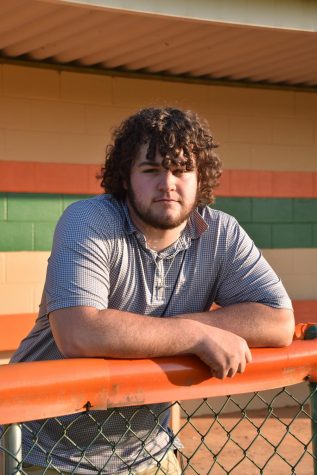
Student-athletes now also have the option of a 5th year, often known as the “corona year.” The “corona year” is an extra year of eligibility offered to college athletes who were competing in the spring of 2020 and had their season cut short due to COVID. Making it so that college sports programs have the opportunity to keep their athletes another year or the athletes may transfer to another school to compete for an extra year. This puts high school athletes in direct competition with college players using that extra year.
Connor Wood, a dual-sport student-athlete at Rutland High School in Macon, Georgia shares these same difficulties.
“We were right in the middle of baseball season and our coach told us, hey we are going to take two weeks off, we will be back as soon as we can and 2 weeks turned into 3 weeks and 3 weeks turned into 4 and just by that point it got to it being a month since we played baseball and there was really no hope,” said Wood.
Wood shares his personal experience in dealing with the pandemic and how it has impacted his own athletic recruiting process as a current high school senior.
On average only 7% of high school athletes go on to play collegiate sports with only 2% of those students being able to achieve the feat of playing division one sports. Taking these low odds of being able to play sports at the college level along with these complications due to the addition of the “corona year,” many high school athletes are struggling more than ever.
What’s next? The outlook from their 20s
By Rose Thorne and Chance Allen
At first, many young adults felt safe from COVID-19. Amid reports that the age group experienced less severe symptoms of the disease than generations above them, people in their twenties were slower to adjust to shelter-in-place orders and social distancing guidelines; bars remained popular on weekends, beaches stayed crowded during spring break and college classrooms were full.
But soon, adults between 20-49 became the most likely age group to spread COVID-19.
As pandemic-related restrictions morphed from a temporary inconvenience into a fact of life, young adults began to bear the brunt of the mental health challenges, disrupted schedules, delayed life plans, and educational struggles. While school, work, and social life changed for all Americans, those in their twenties were living through an already difficult transitional period. For them, COVID-19’s impact affected their ability to start their adult lives.
Major life events that typically make the twenties a transformative time slowed. Colleges shifted to virtual formats in March and canceled graduation ceremonies, one in four young adults were unemployed by April and college enrollment declined by 2.5% in the fall. By 2021, 7% of unmarried folks under 55 had postponed a wedding, and 34% of American women said they delayed having a child.
For young people of color and young members of the LGBTQ+ community, additional pandemic-related troubles surfaced — and twentysomethings with ties to Middle Georgia were no exception.
‘Getting so many different lucky breaks’: Navigating gender transition and graduate school
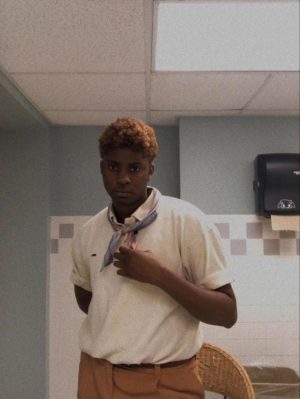
Ty Battle, 22, will graduate this spring with a psychology degree from Wesleyan College in Macon. Wesleyan is historically a women’s institution; in fact, it was the first in the world chartered to offer degrees to women. But Battle is transmasculine, and he underwent the bulk of his gender transition thus far while enrolled at Wesleyan — and during the COVID-19 pandemic.
Amid the health crisis, access to gender transition care such as hormone replacement therapy and gender-confirmation surgery became limited, as many medical institutions considered them “elective” procedures and postponed or delayed them.
So Battle used Plume, an online medical service staffed by transgender health care providers. The doctors at Plume helped him begin taking testosterone.
“I’m just, like, getting so many different lucky breaks,” he said.
When the pandemic first settled into the area in March 2020, Battle stayed on Wesleyan’s campus with his girlfriend as long as he could. Battle had only recently come out to his family as transgender, so not only did he want to avoid getting them sick, he also didn’t feel that his home life would be as affirming of his gender identity as his college life.
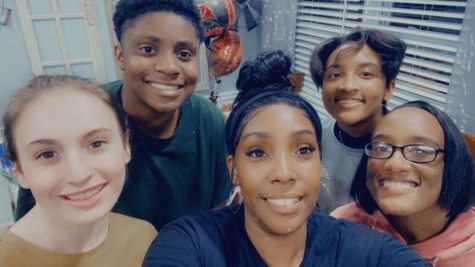
But when it became clear that the pandemic was becoming a new way of life, he ultimately returned to his mother’s house, where they often clashed. However, he took those disagreements as an opportunity to speak candidly with her about his identity and experiences.
“She was actually hearing what I was saying and like, changing how she felt. For the most part, I think it did make us come together,” he said. “We fought a lot. But because of the fighting, we can hear each other’s perspectives, and it made us grow together.”
Still, Battle — like many other queer college students — felt isolated from the LGBTQ+ community he’d formed back on campus. To combat his loneliness, he started a group chat with Black trans men and transmasculine people from all over the world to foster that sense of belonging he was missing.
“Knowing other Black trans people was like, unheard of,” he said. “Being able to find community online with other people was just so rewarding, and it literally just diminished all the negative things that I was feeling with my family and the people around me. The pandemic sort of, like, made my support system smaller, but it also made it bigger.”
The group chat supported Battle through starting his medical transition, living with family members who weren’t always supportive, and applying to graduate school — a laborious process Battle said became even less accessible during the pandemic.
Despite the challenges, he was accepted to a graduate program in clinical counseling at Holy Family University in Philadelphia, where he’ll start classes this fall. He plans to become a therapist and work with LGBTQ+ clients.
‘Take whatever happens’: Finding joy in uncertainty
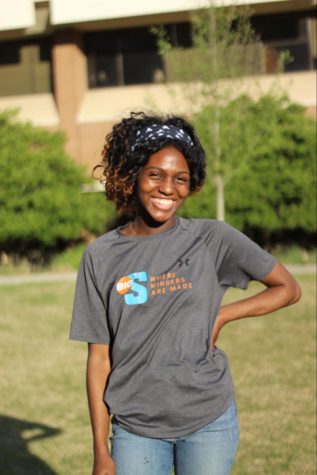
Jayla Moody, 24, is learning to embrace the moments when plans go awry.
Moody is a goal-setter, and she has a history of reaching those goals. She recently graduated with a Master of Arts in Communications and Digital Media Strategies from Georgia State University. She founded an inspirational storytelling brand, Joy by Jayla. She published an ebook, “Choosing Your Joy: Designing the Life You Want and Deserve.” And in November 2020, she got engaged.
But the COVID-19 pandemic showed her that not everything in life can — or should — be so carefully planned.
“I thought I knew exactly what I wanted to do, or where I wanted to be, prior to the pandemic,” Moody said. “The pandemic really forced me to sit and think about that, and be intentional about that.”

Moody didn’t plan to get engaged in 2020, much less during a pandemic. And while getting her master’s degree was always in the cards, graduating so soon wasn’t. She had accepted an offer to intern in New York City over the summer of 2020, but COVID-19 caused her employer to shift to remote operations.
She had to re-envision her plans and stay in Atlanta for the summer. At the same time, she took classes online at Georgia State and finished her degree that fall, a semester early. Then, just a month before her graduation, her fiance Jordan proposed to her.
“I always saw myself as the friend that would be like, not married until I’m 30,” Moody said. “I was always extremely career-driven, so I never saw myself getting married so soon. But I like to think that God laughs at our plans, and what is supposed to transpire in your life will happen.”
For Moody, the pandemic and her engagement both came at a time when she was already experiencing personal growth.

“I’ve watched my life change tremendously the older I’ve gotten,” she said. “The more lessons I learn, the more mature I get. The stuff that I cared about two years ago, you know, I could laugh at myself now for caring about. And to me, that is a blessing.”
Moody is still a goal-setter; she’s currently planning for her career and for her wedding, which she hopes will take place next spring. She’s also planning for enriching life experiences. She hopes to earn another degree, move to a new city and travel internationally before her thirtieth birthday. But amid the pandemic, her perspective on those aspirations has shifted.
“I’ve learned to take whatever happens. I don’t have any expectations, I have goals,” she said. “If they don’t come, then it wasn’t meant for me.”
‘It can be a little bit defeating’: Showing the realities of building resilience
Suzanna Arul, 23, graduated from Mercer University last spring with degrees in Media Studies and Global Health. She has built a portfolio filled with images, video, design work and writing that she’s collected through personal documentary projects, classes and internship work at major companies like WebMD.
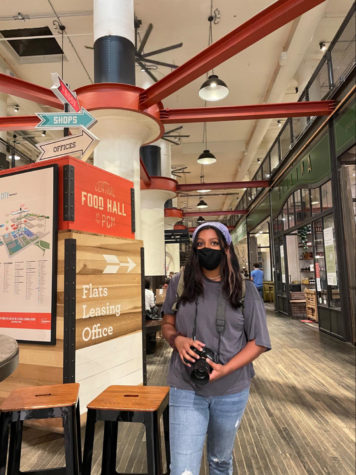
With all of the work Arul’s put into her career, there was nothing that could stop her success – or so she thought.
The COVID-19 pandemic has completely changed the way that graduates make decisions about their next steps in life, especially when finding jobs and stepping out into an individual’s specific career. For Arul, this was the most challenging part of stepping into adulthood.
Arul was studying abroad at the University of Essex in England when COVID-19 became prevalent, and she was forced to leave. Soon after, she graduated and began looking for jobs.
Arul worked at a sports bar from March until November, spending six months attempting to find a more stable job within her career path. While lengthy and exhausting, Arul pushed through and is incredibly grateful to have her current job at a health insurance agency under her belt.
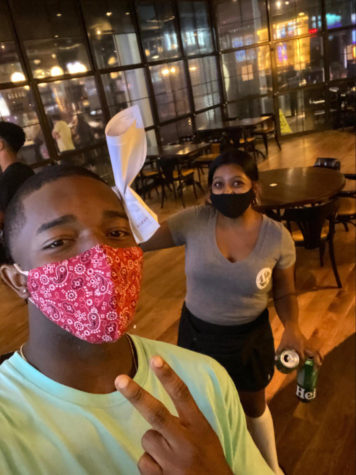
“It was a stressful process for sure, and there were definitely a lot of emotions as I went through that process. It’s been an emotional time for everyone really, but when you go through that job search, it can be a little bit defeating,” she said. “I think it’s something that every recent graduate goes through, but going through it in a pandemic I feel like was a different kind of experience.”
Arul understands that the twenties are a scary but pivotal time for so much learning, especially when going through this time amidst a global pandemic. It’s a time for self-discovery and self-acknowledgment, delving into the unknown of ourselves and trusting the process to be our true and fullest self.
“It’s scary for sure, but I feel like that’s the nature of the twenties; half of your peers are getting married and posting about their first kid that’s coming, and the other half is still on spring break mode 24/7 partying. It’s just a weird age group to be in because everyone is in different stages of life but all around the same age,” she said.
The COVID-19 pandemic changed everything for everyone, but it hasn’t stopped twenty-year-olds quite yet. For Arul, this year is her everything.
“22 was supposed to be my hot girl summer. Because of everything, I’m treating 23 like I was going to treat 22,” Arul said. “I’m not really too focused on where everyone else is in life, I’m just going to try and focus on myself and enjoy this year as it is.”
Vegetables and Vaccines
by Yasmeen Hill and Mitch Robinson
No matter where in the country you find yourself on a Saturday morning, chances are high that you can find a local farmer’s market nearby. Though not nearly as ubiquitous or popular as they once were, farmer’s markets provide a fresher, more local, and more intimate experience than their supermarket counterparts.
What you might not expect to find on your weekly market trip are long lines and military personnel guiding civilians through the vaccination process. But, this is just one of the ways that the Macon State Farmers Market has had to adapt during the Covid-19 pandemic.
Local farmers and vendors rent spaces to sell their produce and goods year-round. Unlike some weekly or seasonal markets, Macon’s market only closes for two days out of the year–a practice that continued even into the pandemic.
“During Covid, we were considered [an] essential business. We stayed open, we stayed fairly busy,” market manager Rich Lewis said.
Tiffany Mims, 40, is a loyal customer of the market and one of the people who kept the vendors busy after the pandemic was officially declared over a year ago.
“The best place to come get your greens is here, there’s less stems, less dirt,” she said. Mims has shopped at a market stand called Diann’s Produce for collard greens over the past three years.
The Journal of Food Distribution Research found that women Mim’s age and above are the most likely to patronize a farmers market. While 54.6% of fully vaccinated adults are women, 13.2% are between the ages of 40 and 49 according to the CDC.
In February 2021, the market was selected to serve as one of four mass vaccination sites in Georgia, in conjunction with the Georgia Emergency Management Agency (GEMA) and the National Guard.
“There have been some very, very busy days with that, and there’ve been some not so busy days as far as the impact on our vendors and customers,” Lewis said, “Our busiest time is coming up, the busy time for the vaccination site was about a month ago.”
GEMA was looking at the market for permanent placement prior to the decision to use the space for mass vaccinations, according to Lewis. The agency was interested initially because of the facility’s central location. But the partnership hasn’t always been beneficial for market shoppers or vendors that are counting on sales.
“If you don’t pay attention you’ll be stuck in the back-line which is a bad thing but you have to come around,” Mims said. “They have a sign ‘Right’ for the farmers market ‘Left’ for the vaccine.”
The signs are posted to reduce traffic at the entrance, but there is still some confusion about navigating the site.
“We have had to be vigilant, from our standpoint, to make sure that our vendors and our customers are taken care of,” Lewis said.
To work or to retire?
By Will Magruder and Dean Yusuf
While many small business owners were worried that they might not survive the pandemic, John Davis experienced something different.
As the owner of a neighborhood hardware store, he saw a lot of new home buyers and renters investing in their gardens and tackling DIY projects. “Spring has always been our best season. So we’re a little busier actually. And I think it’s because the pandemic has been somewhat of a boon to our business, as it has to a lot of people in the lawn and garden industry,” Davis says, “they do more projects in general when the weather’s nicer.”
Nearly half of all small businesses in America claim the impact has been significant to severe. According to Businesswire.com, 27% have reduced the size of their workforce. However, emergency relief programs like the Federal Paycheck Protection Program (PPP) have done their part in keeping small businesses afloat. With strategic use of these programs, clever adaptations, and with the help of market trends, some businesses have been able to not only survive but thrive, including Macon’s own Daemarii’s Unique Boutique.
After months of shut-down and lost revenue, Virginia Sharp, co-owner of Daemarii’s Unique Boutique, knew she had to get creative to breathe new life into her business. Her solution was, as is common in the COVID-19 pandemic, to turn to the internet.
“Facebook has really taken our business to a whole other level,” Sharp said. “National, international (…) lots of customers out of California, Texas, New York, Miami, Chicago. So we have people now just watching this all over the place.”
Sharp began streaming Facebook Live fashion shows, each with its own unique themes and began selling items featured on Livestream on her Facebook page. Sales increased so quickly that Sharp has now started working on her own website to foster further online growth.
But while some professions were able to adapt to, and even thrive, during the pandemic, the occupational strain of the pandemic was simply unavoidable for others, like many teachers experienced.
It seemed like it was just another Monday for Chevonne Coons at Bernd Elementary School. She had just set up the afternoon’s lesson on her SMART Board while organizing her notes for the daily reading as her Elementary school students came to her class one by one. As the students found their seats, the speakers came to life telling everyone in the building that the students would go home early. Coons helped her students leave their class and, soon enough, began preparing a lesson for the next week, hopeful they would return soon. This would be the last time she would be around her students for the rest of the school year.
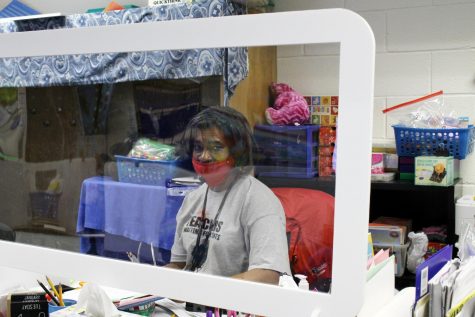
Teachers all over the US have been facing an uphill battle with the pandemic, and the teachers of Macon-Bibb county are no exception. With teachers struggling to find ways to teach their students, a couple of teachers have come across obstacles with teaching during the pandemic.
Jermila Slocumb, a second-grade teacher at Veterans Elementary School, said she had been struggling to find ways to adapt her teaching style with social distancing.
“Preparing to do online learning was extremely difficult for me,” Slocumb explained, “We had technology courses that were coming at us every day, most of the day, for all of August. It made me extremely anxious and nervous changing up everything. And since I could not keep up with it, I felt very insecure about how I was going to teach my students and please the parents. And no one wants to appear incompetent.”
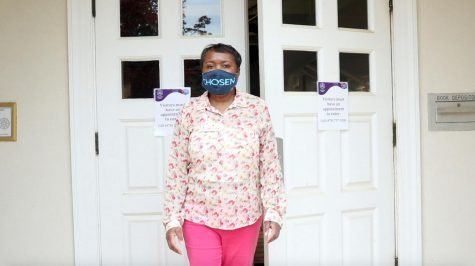
Many teachers wanted to return to in-person teaching despite coronavirus being most fatal to groups age 50 and older according to the CDC as they make up about 95% of COVID-19 related deaths.
John Banks, a reading teacher at Lane Elementary, said he preferred being in person with the students even during the pandemic.
“I like the old-fashioned way, you know, like actually bringing them in here,” Banks said. “I hadn’t been able to see them since March. And I know I have a small role, with maybe 10 students, but I just like to make a connection with the kids. You can’t make a connection with the computer after all.”
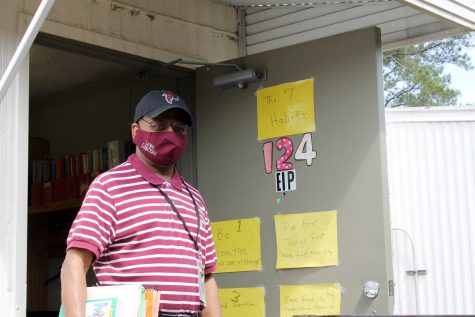
Despite the positive and negative events caused by social distancing, many older entrepreneurs and teachers approaching retirement have managed to stay resilient and hopeful that the pandemic will come to an end soon. Some had even learned lessons from their pandemic experience.
“I would hope that it has brought people a little closer together, also letting us know that life is short,” Coons said. “I would really hope it makes all of us stop and think about life and the people in our lives and take the time to value them. So, I’m blessed to know that.”
Isolated in an Older Age
By Alexandria Dorsey and Angel Colquitt
Debbie Johnson, 65, didn’t realize how serious the Covid-19 global pandemic was going to be when she first heard about it in January of 2020.
Johnson said she “watched in horror everything going on in New York and in the medical field.” She felt a sense of helplessness.
According to a study from the Center for Disease Control and Prevention (CDC), people in their 60s and 70s are at a higher risk for severe sickness due to Covid-19 and it only gets worse as a person gets older. Currently, the CDC reports that eight out of nine Covid-19 reported deaths in the US have been in adults aged 65 and older.
“It was hard watching the daily reports of the number of people getting sick and dying,” Johnson said as she thinks back on the past year, since the beginning of the Covid-19 global pandemic.
“I thought it was going to be, not a year later. But I knew it wasn’t going to be two weeks,” Johnson said. “To me, things were going on. And you had to be very careful, and so many people getting sick, that it was going to take a while, if nothing else, just the sickness, but trying to find the vaccine.”
Johnson is the owner of Clearing the Way, a business that seeks to aid older people in downsizing their estates.
She said the beginning of the pandemic was a scary time as clients slowed down and many people stopped going into public. She explained that she was initially happy for someone to tell her to stay home but things changed when the world around her began to stay home as well.
“Everybody was staying home, and just very afraid of what was going to go on. So I just kind of stayed home and decluttered my own house,” Johnson said.
Cheryl Hales, 64, has also had to make some adjustments in her life and it opened her up to new perspectives. Some things that were once unthought of, became her new every day.
“My sister was doing curbside pickup at Walmart, way before the pandemic, and I used to make fun of her and I was like, ‘Can you not just get out of your car and go in the store?’, but once I was forced to do it, it’s like, oh my gosh, wow, and I’ve been doing this all along,” Hales said.
For Hales, the pandemic changed not only her day-to-day life but also her overall health status after she contracted COVID-19.
“After I got over what I considered the actual sickness of COVID, immediately after that I got a sinus infection and then I got a yeast infection. I’ve never had an infection in my life,” Hales said, “That was kind of surprising. It seems like [Covid-19] almost knocks people’s immune systems out, and then suddenly they’re vulnerable to whatever for the next few months.”
The COVID-19 pandemic only increased Hales fears and misgivings about the medical field. Her mother died in 2018 and Hales believes that her mother’s age, 80, played a role in how she was treated.
“This is going to sound terrible but I’ve watched it time and time again with tons of people. It seems to me, and has always seemed to me that the medical profession does not make as much effort with an older person,” Hales said, “it appears that they don’t take the same concerns to diagnose and treat accurately a 70-year-old, that they would take with a 20-year-old.”
Hales feels that that is exacerbated by the pandemic. “I’m convinced, I will be convinced until the day I die that the hospital just let my mother die,” Hales said. She can’t prove it but she feels it.
There have been reports of elderly neglect in the United States that have only risen because of the pandemic. Many elderly people have been facing neglect both in hospitals and in elderly care facilities.
“You’ve got doctors and nurses that are working beyond the point of endurance. I mean, obviously, they’ve only got a limited amount of energy. You’ve got an 80-year-old person here with COVID on a ventilator, as opposed to a 20-year-old with COVID on a ventilator. Let’s use their energy on the 20-year-old as opposed to the 80-year-old,” Hales said.
Hales has been spending most of her time at home since the pandemic hit. She said that she had originally planned to find a part-time job but when the pandemic happened she decided that working wasn’t what she actually wanted.
Johnson said that with all the time at home she has begun to think about the things that are really important to her. It has changed the way she interacts with those closest to her.
She recently saw her grandchildren for the first time in a year.
“That’s been extremely hard because I would go up for games, and they haven’t had games because of all this,” Johnson said, “So it’s changed everything.”
In the past few months, mental health has been a discussion in Johnson’s household.
“I think that there have been times, I think [my husband and I] have both been depressed because we can’t do and see the people we want to see. And now with not being able to see my mother, I’ve been able to see her but behind the glass door….it’s just been an up and down kind of thing,” Johnson said.
She said that while inside, she would sleep late and pick out a project to do around her house for the day.
“I enjoyed doing it, knowing I didn’t have to be anywhere at any time,” Johnson said.
She said that because her husband, John, is retired and because she runs two at-home businesses, they spent a lot of their time together.
Hales feels the pandemic hasn’t truly affected her mental health as she says she liked being home before COVID-19 forced us all inside.
Hales said that the biggest change in her life is that she doesn’t go window shopping as much as she used to. She said that she’s “just broken the habit and it never occurs to [her].”
However, with the adjustments and the uncertainty of the future going forward with COVID-19, Johnson and Hales have things to look forward to.
Johnson says that the first thing she wants to do when the world possibly becomes maskless again is going to a restaurant and then a movie.
Hales has recently taken up gardening in her backyard.
The reporting for this project was done collaboratively by students in JMS490, an advanced level reporting class at Mercer University.



